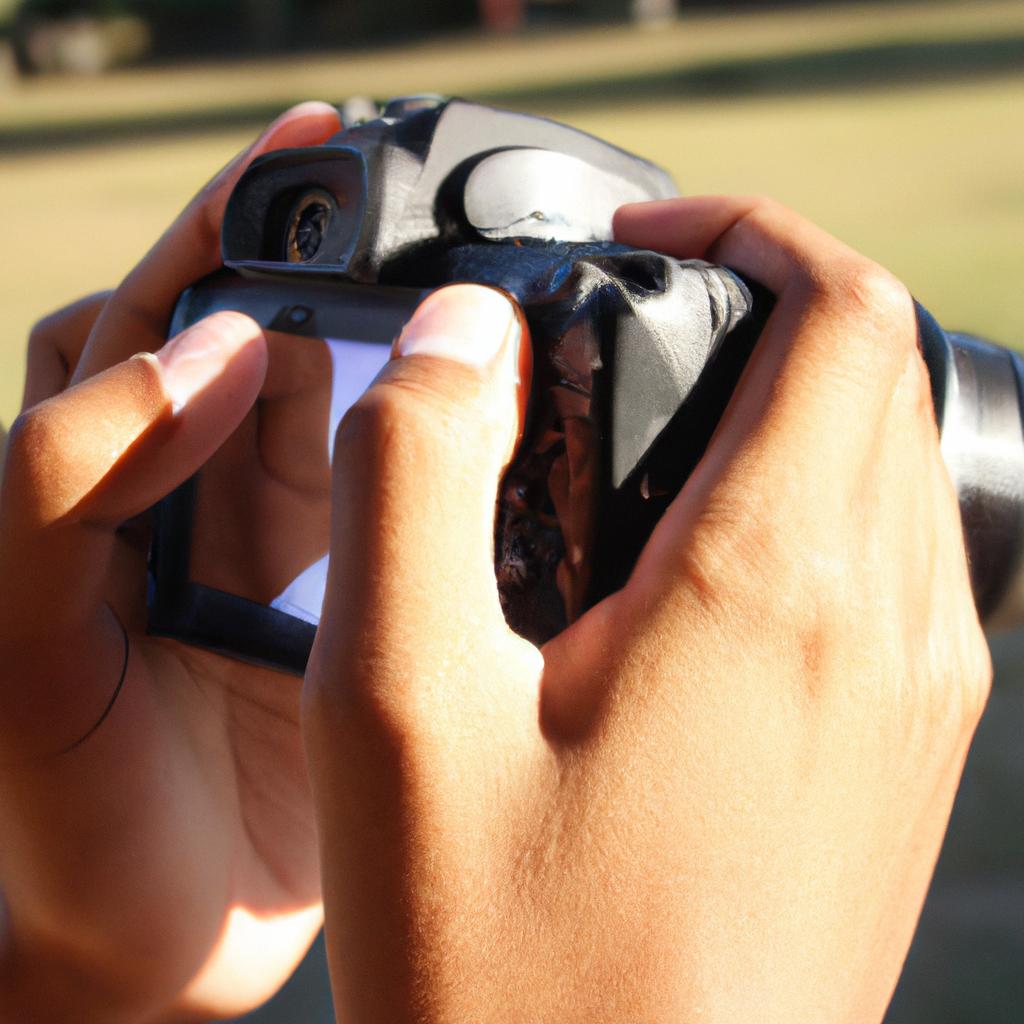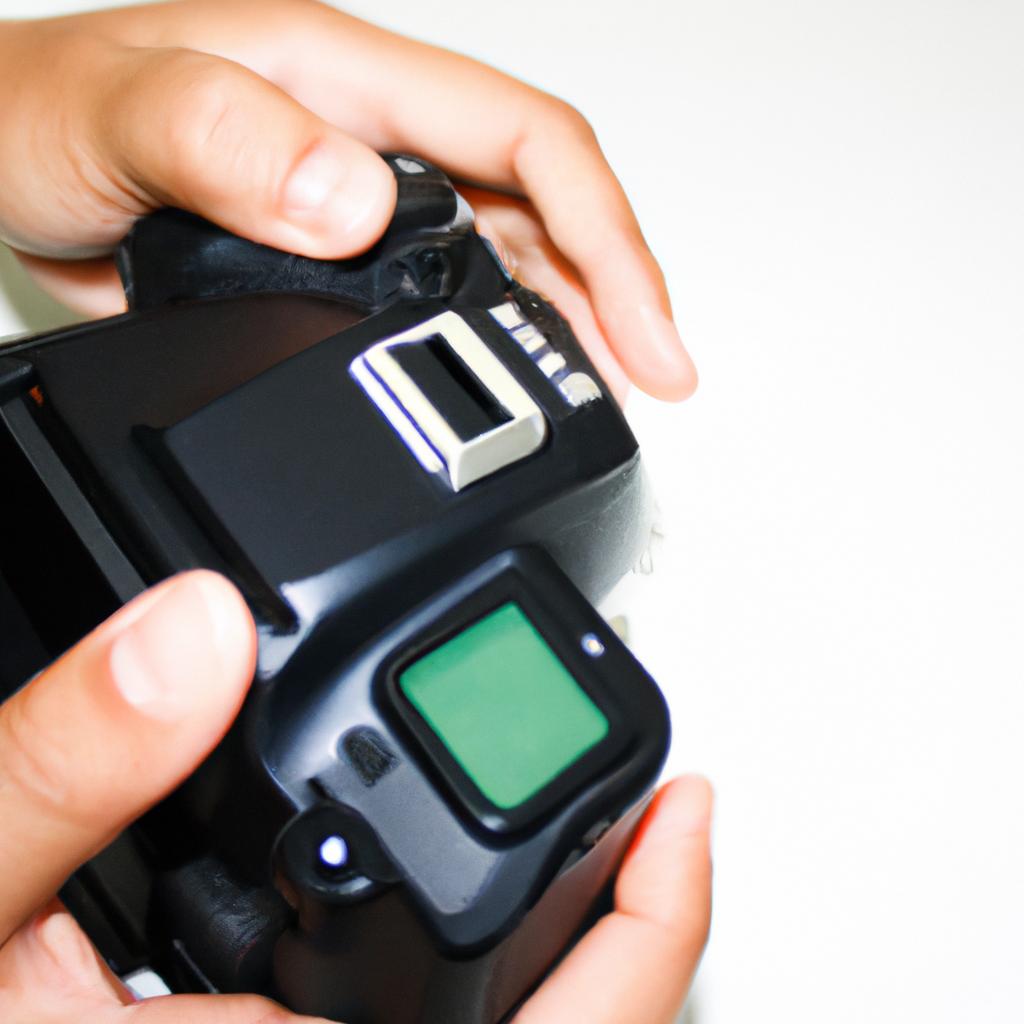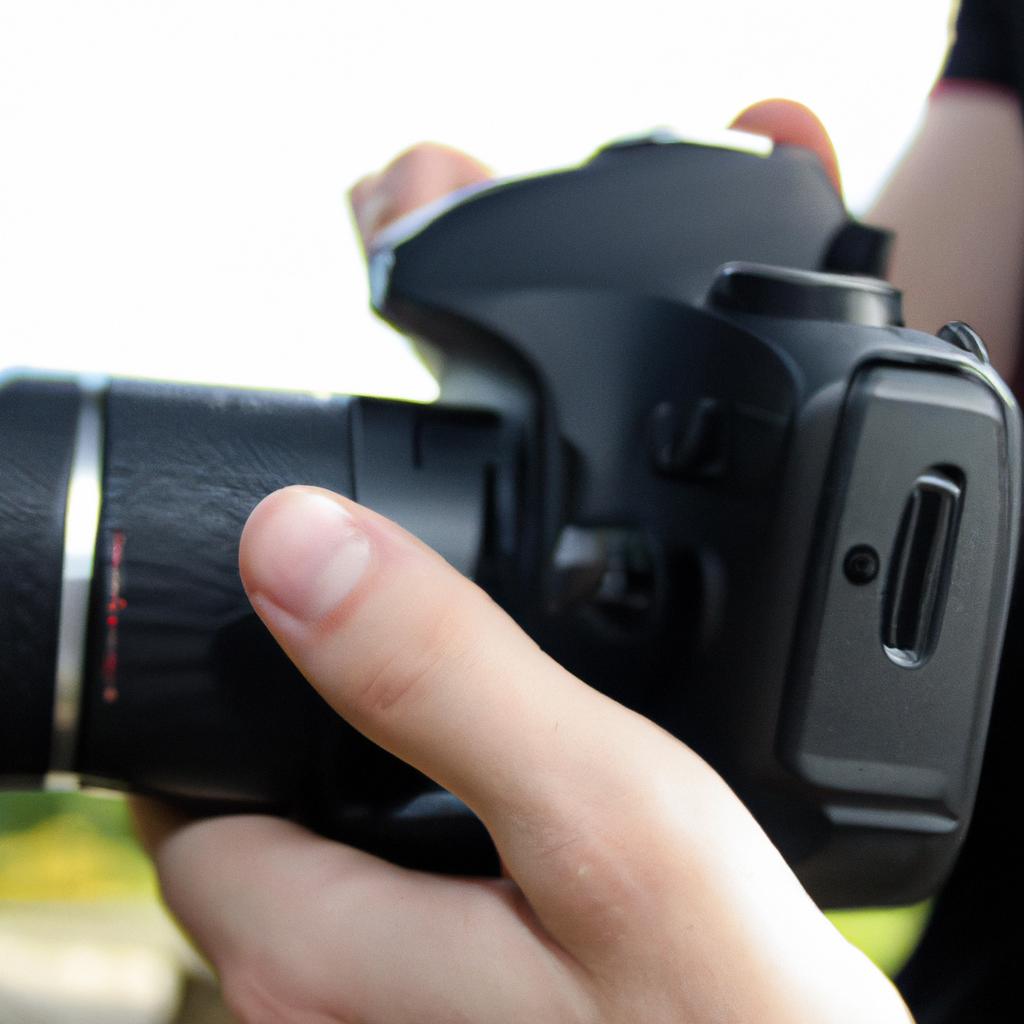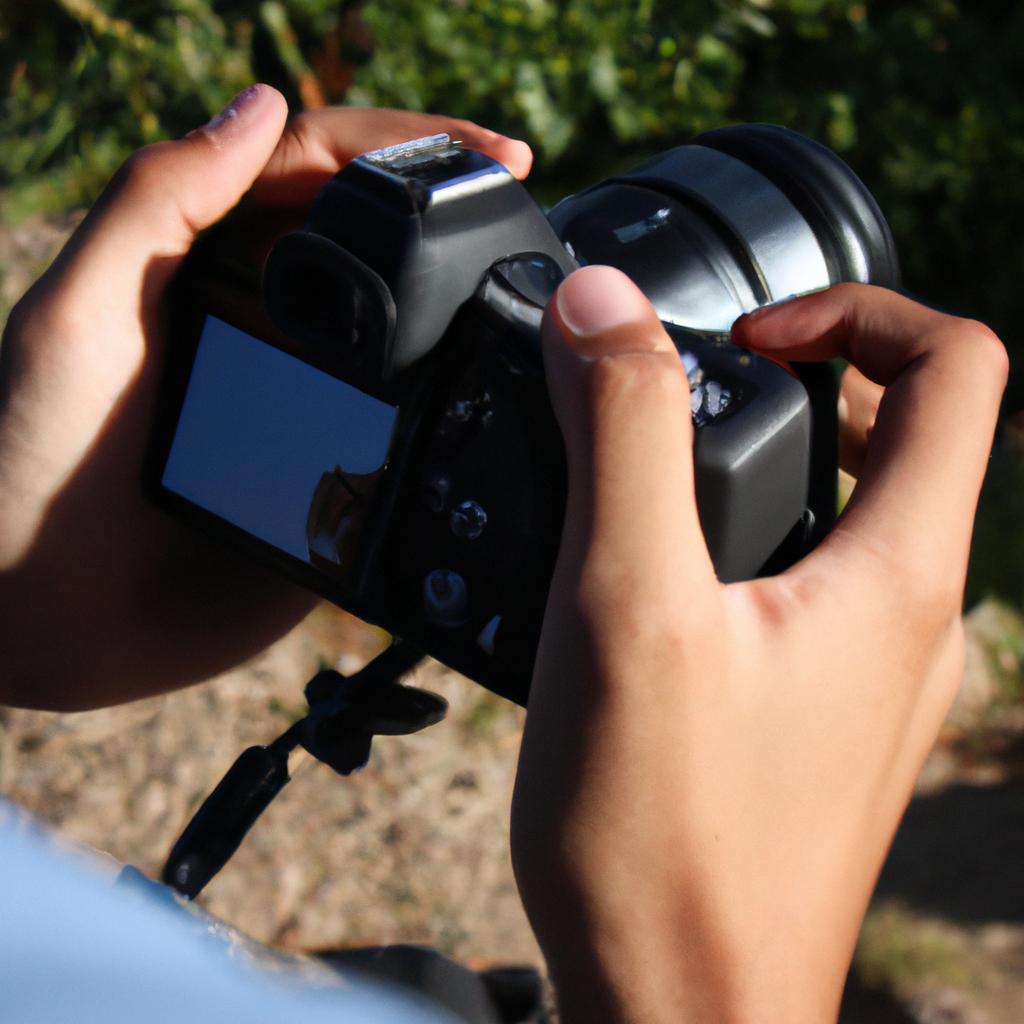Kelvin Scale: White Balance in Photography
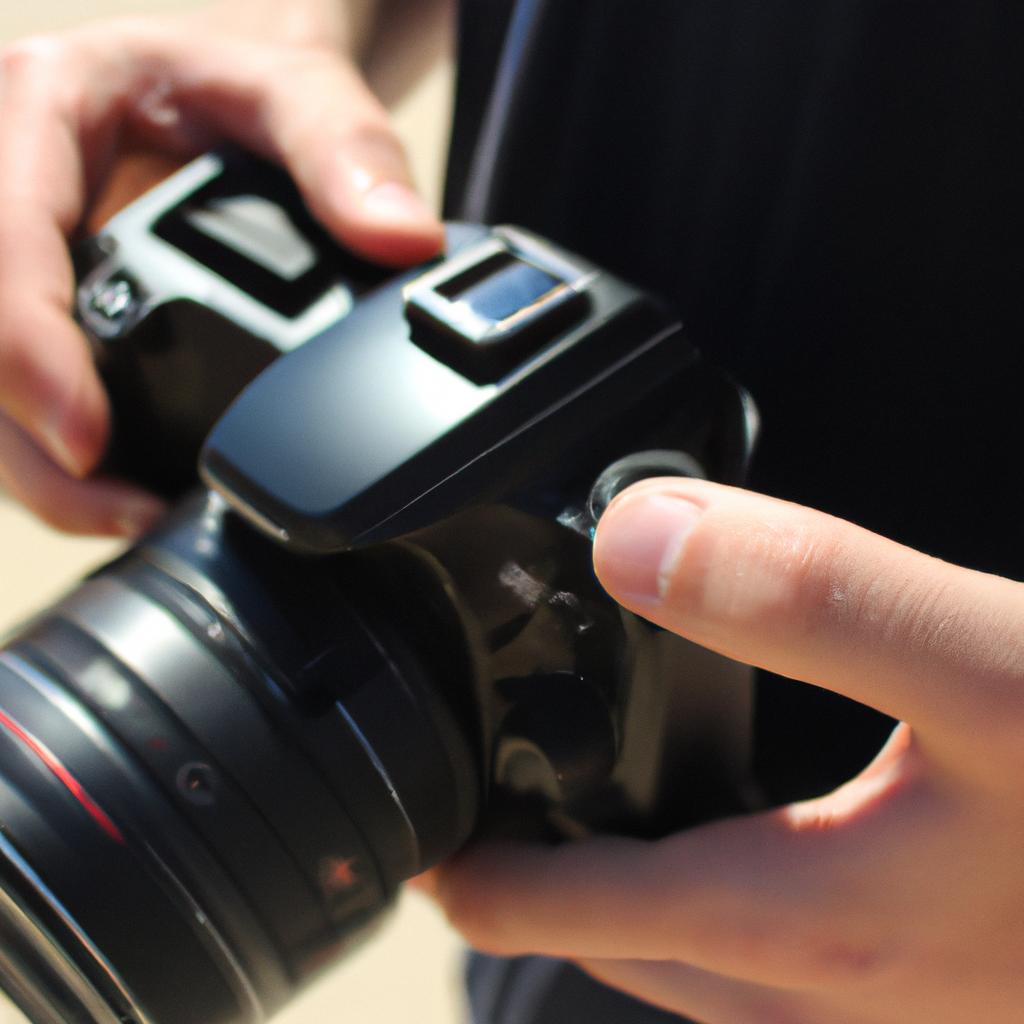
Photography enthusiasts often strive to achieve accurate and pleasing colors in their images. One crucial aspect of achieving this is understanding the concept of white balance. White balance refers to the adjustment of color temperature in an image, which ensures that whites appear truly white and other colors are rendered accurately. The Kelvin scale is a widely used metric for measuring color temperature, providing photographers with a standardized way to adjust and control white balance.
To illustrate the significance of the Kelvin scale in photography, let us consider a hypothetical scenario. Imagine a photographer capturing a stunning sunset scene over a tranquil beach. As the sun dips below the horizon, it casts warm golden hues across the sky and water, creating a breathtaking visual spectacle. However, if the photographer fails to correctly adjust their camera’s white balance using the appropriate Kelvin value, these vibrant tones may be lost or distorted in post-processing. Understanding how different temperatures on the Kelvin scale can impact color rendition is vital for photographers aiming to faithfully capture such captivating scenes without compromising on accuracy and aesthetic appeal.
In this article, we will delve into the intricacies of white balance in photography and explore how the Kelvin scale serves as an essential tool for achieving optimal results. By comprehending its principles and practical applications, photographers can unlock new creative possibilities while ensuring that their images accurately represent the intended colors and atmosphere of the scene.
Kelvin scale and its significance in photography
Photography is not just about capturing a moment but also about accurately representing the colors and tones as they were perceived by the human eye. The Kelvin scale plays a crucial role in achieving this accuracy, allowing photographers to adjust their camera settings for different lighting conditions.
To understand the significance of the Kelvin scale in photography, let’s consider an example scenario. Imagine a photographer trying to capture a beautiful sunset at the beach. As the sun sets, the color temperature of the light changes from warm golden hues to cooler blues. Without adjusting the white balance according to these changing temperatures, the resulting photograph may fail to convey the true essence of that magical moment.
The importance of using the Kelvin scale becomes evident when we realize that different light sources emit light with varying color temperatures. To help photographers effectively manage these variations, here are some key points:
- White balance: It refers to calibrating your camera settings to ensure accurate reproduction of whites under different lighting conditions.
- Color temperature: Measured on the Kelvin scale, it determines whether a scene appears warmer (lower values) or cooler (higher values). For instance, candlelight emits light around 1800K while daylight ranges between 5000K and 6500K.
- Emotional impact: Different color temperatures evoke specific emotions and moods in photographs. Warm tones often create a cozy and intimate atmosphere, while cool tones can convey a sense of calmness or solitude.
- Creative expression: By intentionally manipulating white balance settings based on desired outcomes, photographers can enhance storytelling elements within their images.
Let us now delve into understanding the concept of color temperature without missing any details. Understanding this fundamental aspect will enable photographers to make informed decisions regarding white balance adjustments for captivating visuals that truly resonate with viewers’ emotions.
Understanding the concept of color temperature
Understanding the Concept of Color Temperature
Imagine taking a photograph outdoors on a sunny day. The bright sunlight casts a warm, golden glow over the scene, giving it a cheerful and vibrant feel. Now, picture that same scene photographed at dusk, when the light is cooler and bluer in color. Suddenly, the mood of the image shifts to one of calmness and tranquility. This difference in color temperature is what photographers refer to as Kelvin scale.
The concept of color temperature in photography is derived from Kelvin scale measurements. It quantifies the relative warmth or coolness of different sources of light by assigning them specific numerical values on a scale. These values are expressed in degrees Kelvin (K), with lower numbers indicating cooler tones and higher numbers representing warmer tones.
To better understand how color temperature affects an image’s overall look and feel, consider these key points:
- Emotional Impact: Different color temperatures evoke distinct emotional responses from viewers. Warm tones tend to create a sense of coziness, intimacy, and excitement, while cooler tones convey a feeling of serenity, detachment, and introspection.
- Visual Hierarchy: By manipulating color temperature through white balance adjustments during post-processing or using filters while shooting, photographers can guide viewers’ attention towards certain elements within an image based on their desired emotional response.
- Subject Enhancement: Choosing the appropriate color temperature can enhance the appearance of specific subjects within a photograph. For example, warm lighting may accentuate skin tones in portraits or make food appear more appetizing.
- Contextual Harmony: Selecting a consistent color temperature throughout a series of photographs helps establish visual coherence and narrative cohesion.
Incorporating different color temperatures into your photographic work requires careful consideration and experimentation. Understanding how Kelvin scale impacts the overall mood of a photograph allows you to wield this tool effectively, eliciting specific emotions from your audience and creating visually compelling imagery.
Transitioning seamlessly into our next section about “How Kelvin scale affects the overall mood of a photograph,” let us explore further how color temperature influences the emotional resonance and storytelling potential of an image.
How Kelvin scale affects the overall mood of a photograph
Understanding the concept of color temperature is essential in achieving accurate white balance in photography. The Kelvin scale, named after physicist William Thomson (also known as Lord Kelvin), is commonly used to measure color temperature. By adjusting the white balance settings on your camera based on the Kelvin scale, you can ensure that colors appear natural and true to life in your photographs.
To better understand how the Kelvin scale affects the overall mood of a photograph, let’s consider an example. Imagine you are taking portraits outdoors during golden hour, just before sunset. At this time of day, the sun emits warm, soft light with a color temperature around 3000-4000K. By setting your camera’s white balance to match this lower Kelvin value, you capture the warmth and glow of the scene accurately, resulting in pleasing and inviting tones.
The use of different Kelvin values can greatly impact the mood and atmosphere conveyed in a photograph. Here are some key points to keep in mind:
- Higher Kelvin values (above 5000K) tend to produce cooler tones such as blue or bluish-white light. This can create a sense of calmness or serenity.
- Lower Kelvin values (below 5000K) produce warmer tones like yellow or orange light. These warmer hues often evoke feelings of coziness or romance.
- Extreme temperatures at either end of the spectrum can be used creatively to convey specific emotions or themes. For instance, very high Kelvin values may give images a cold and sterile look suitable for scientific or futuristic subjects.
- Understanding how different lighting conditions affect color temperature allows photographers to make intentional choices regarding their desired visual outcome.
As we delve further into understanding white balance in photography, it becomes evident that choosing the right Kelvin value for different lighting conditions plays a crucial role. With this knowledge about color temperature and its influence on mood established, we will explore practical guidelines for selecting appropriate Kelvin values in various scenarios
Choosing the right Kelvin value for different lighting conditions
How Kelvin Scale Affects the Overall Mood of a Photograph
In photography, white balance plays a crucial role in determining the overall mood and ambiance of an image. By adjusting the Kelvin scale, photographers can manipulate the color temperature to achieve their desired effect. Let’s explore how different Kelvin values can impact the emotions evoked by a photograph.
Imagine you are capturing a serene landscape during sunrise. To emphasize the warmth and tranquility of this moment, you decide to set your camera’s white balance to around 5500K. This higher Kelvin value adds a touch of golden hues to the scene, enhancing the feeling of calmness and creating an inviting atmosphere for viewers.
To better understand how varying Kelvin values affect emotional responses, consider these examples:
- Cooler temperatures (higher Kelvin values) such as 8000K or above tend to evoke feelings of detachment and sterility. These images often have bluish tones that create a sense of distance, making them suitable for portraying futuristic scenes or icy landscapes.
- Warmer temperatures (lower Kelvin values) like 2500K give off a cozy and nostalgic vibe reminiscent of candlelight. Such photographs elicit sentiments of intimacy and comfort, making them ideal for capturing romantic moments or idyllic settings.
- Neutral temperatures around 5000K provide a balanced representation without leaning towards warm or cool tones. Images with neutral white balance appear natural and realistic, appealing to viewers seeking authenticity and accuracy in color reproduction.
This information is best illustrated through visual aids such as bullet points summarizing each emotional response associated with specific Kelvin values:
-
Higher Kelvin Values:
- Evoke detachment
- Convey sterility
- Create bluish tones
-
Lower Kelvin Values:
- Infuse coziness
- Invoke nostalgia
- Produce warm lighting conditions
-
Neutral Kelvin Values:
- Provide balanced representation
- Portray realism
- Ensure accurate color reproduction
Furthermore, a table can be employed to present a concise comparison of the emotional responses elicited by different Kelvin values:
| Kelvin Value | Emotional Response |
|---|---|
| Higher | Detachment, Sterility |
| Lower | Coziness, Nostalgia |
| Neutral | Balanced, Realistic |
Understanding how each Kelvin value impacts the mood of an image allows photographers to convey their intended emotions effectively. In the following section, we will explore common mistakes to avoid when adjusting white balance using the Kelvin scale and ensure optimum results in your photographs.
Common mistakes to avoid when adjusting white balance using Kelvin scale
Choosing the right Kelvin value for different lighting conditions is crucial in achieving accurate white balance in photography. By understanding how the Kelvin scale works and its relationship with color temperature, photographers can enhance their images by effectively adjusting the white balance settings. Let’s explore some common mistakes to avoid when using the Kelvin scale.
One mistake photographers often make is relying solely on automatic white balance (AWB) mode instead of manually setting the Kelvin value. While AWB can be convenient in some situations, it may not always accurately capture the desired colors since it relies on general algorithms rather than specific lighting conditions. For example, imagine a scenario where you are photographing during golden hour, which typically has warm tones due to low sunlight. If your camera’s AWB mode tries to neutralize this warmth by cooling down the image, you might lose that beautiful golden glow that defines this time of day.
To overcome this issue, consider manually adjusting the Kelvin value based on your surroundings and lighting conditions. Here are some tips to help you achieve accurate white balance:
- Use a gray card or an 18% neutral gray target to set a reference point for accurate colors.
- Experiment with different Kelvin values until you achieve the desired look and feel for your image.
- Take test shots and review them on your camera’s LCD screen to assess if any further adjustments are needed.
- Keep in mind that certain light sources have specific color temperatures associated with them, such as daylight (around 5500K), tungsten lights (around 3200K), or fluorescent lights (varies depending on type).
By taking these considerations into account, you can avoid common mistakes and ensure more precise control over the white balance settings using the Kelvin scale.
In transitioning to our next section about “Tips and techniques for achieving accurate white balance in photography,” let’s delve deeper into practical approaches that will aid photographers in capturing true-to-life colors across various lighting scenarios.
Tips and techniques for achieving accurate white balance in photography
Having discussed the common mistakes photographers should avoid when adjusting white balance using the Kelvin scale, let us now delve into some effective tips and techniques that can help achieve accurate white balance in photography. To illustrate these concepts, consider a hypothetical scenario where a photographer is capturing images of a sunset at the beach.
Tips and Techniques for Achieving Accurate White Balance:
-
Observe the Lighting Conditions:
Before adjusting your camera’s white balance settings, take a moment to observe the lighting conditions around you. Depending on whether it’s early morning or late evening, natural light can have varying color temperatures. In our sunset scenario, the warm tones of sunlight during this time could be balanced by setting the Kelvin temperature higher than usual to capture rich golden hues. -
Utilize Custom White Balance:
Most cameras offer an option to set custom white balance based on a reference image taken under similar lighting conditions. By taking a photo of a neutral gray card or any other subject with known colors before shooting your main scene, you can create a custom preset tailored specifically to those lighting conditions. This method ensures precise color accuracy and eliminates unwanted color casts. -
Experiment with Post-Processing Software:
Even if you’ve adjusted your camera’s white balance correctly while shooting, fine-tuning may still be required during post-processing to achieve desired results. Professional editing software such as Adobe Lightroom provides tools like temperature sliders that allow for further adjustment of color temperature and tint levels. Experimenting with these settings allows photographers to explore creative possibilities and enhance their final images.
To evoke emotional responses from viewers through well-balanced white photographs, keep in mind the following key points:
- Properly calibrated white balance enhances the mood and atmosphere of an image.
- Accurate white balance brings out the true colors and details, making images more vibrant and lifelike.
- Inaccurate white balance can lead to unnatural-looking skin tones or color casts that distract from the intended subject.
- By mastering white balance techniques, photographers can evoke specific emotions in their audience, such as warmth, serenity, or intensity.
Emotional Table:
| Technique | Effect | Example |
|---|---|---|
| Warm White Balance | Creates a cozy and inviting feel | An autumn landscape with golden foliage |
| Cool White Balance | Evokes a serene and calm ambiance | A snowy mountain scene |
| Neutral White Balance | Represents accuracy and realism | Architectural photography |
| Creative Color Temperature Adjustment | Adds artistic flair and uniqueness | Abstract or experimental photography |
In summary,
By applying these tips and techniques when adjusting white balance using the Kelvin scale, photographers can capture images that accurately portray the desired mood and atmosphere. Observing lighting conditions, utilizing custom white balance presets, experimenting with post-processing software, and understanding the emotional impact of different white balance settings all contribute to creating compelling photographs that resonate with viewers.

